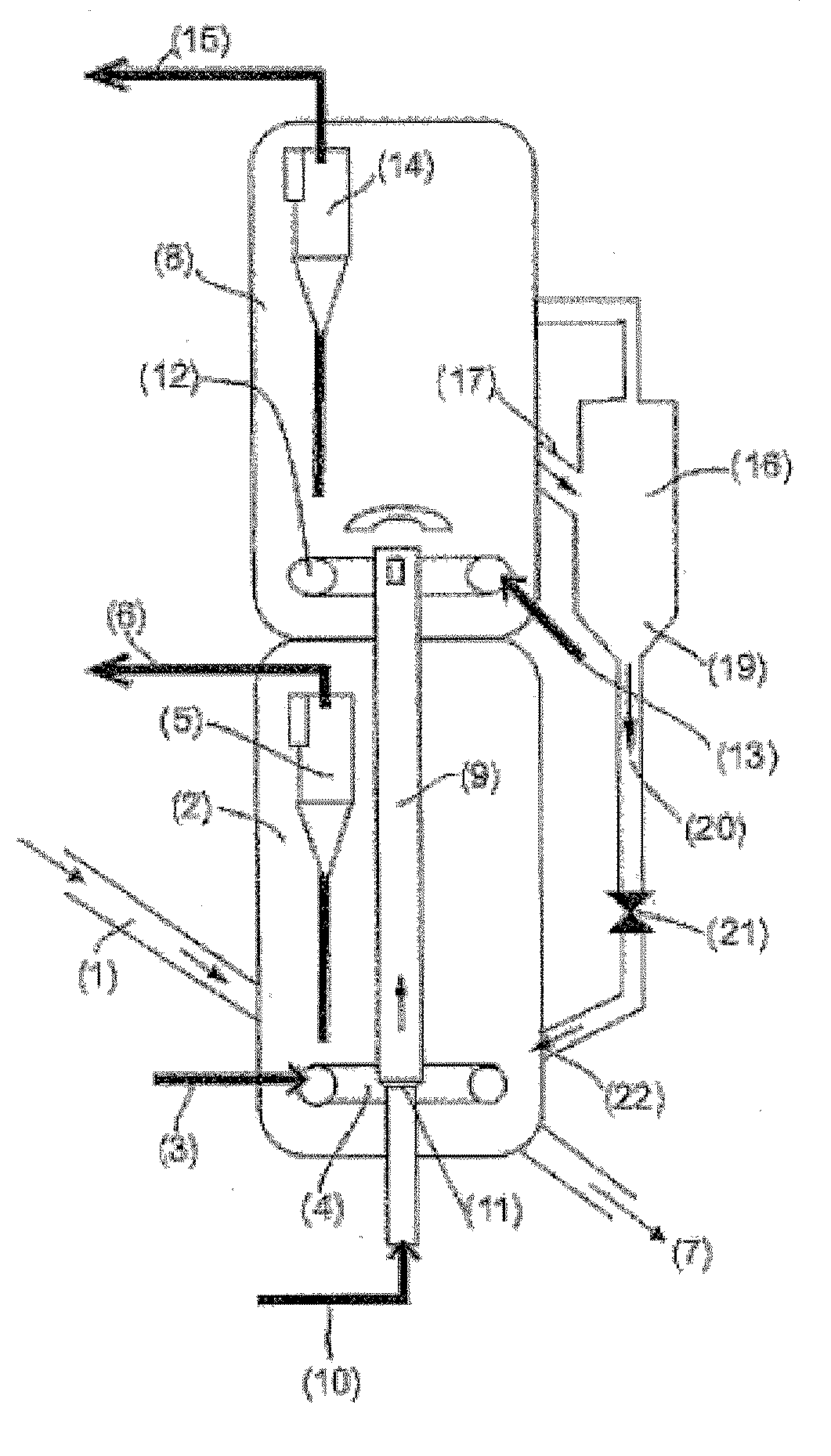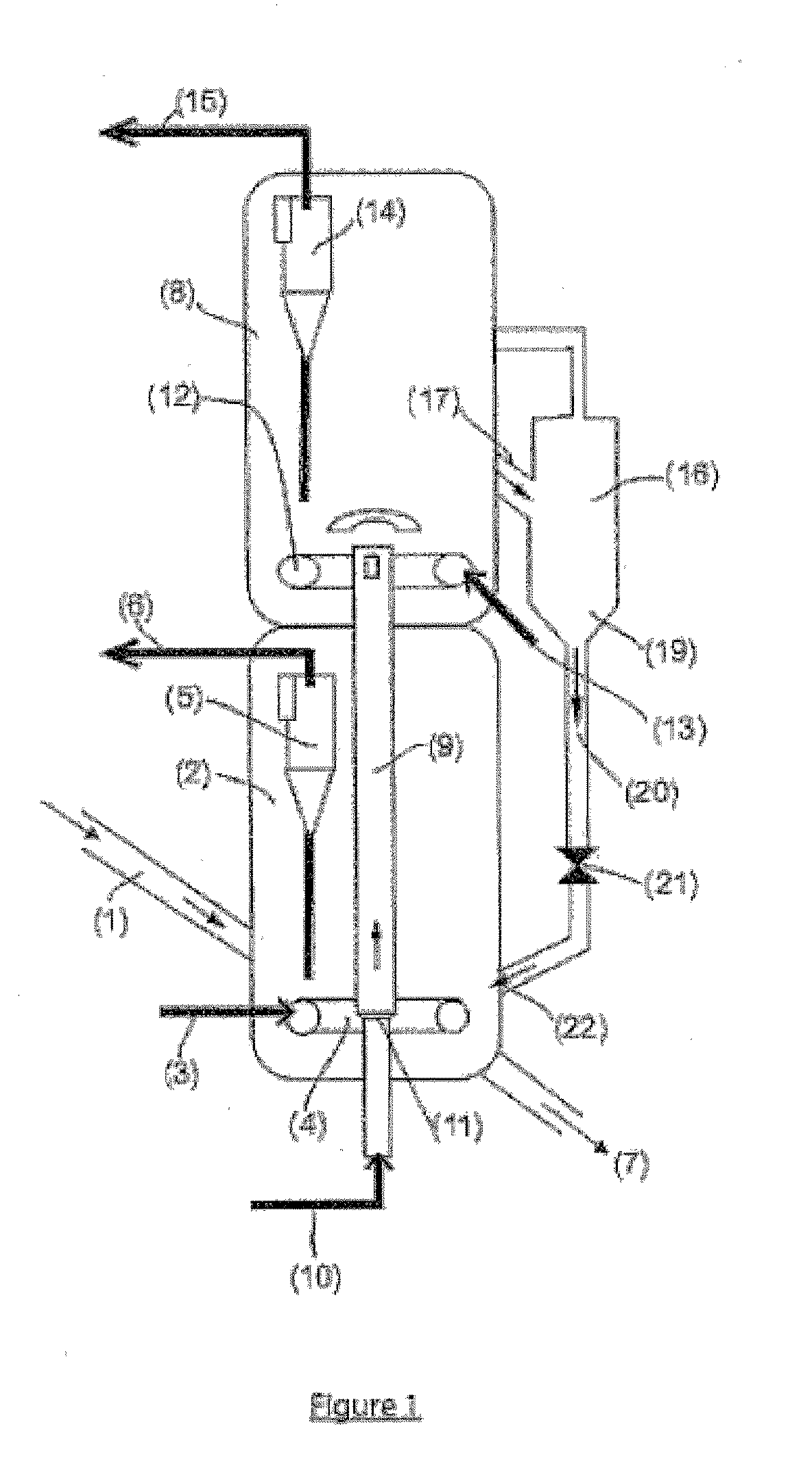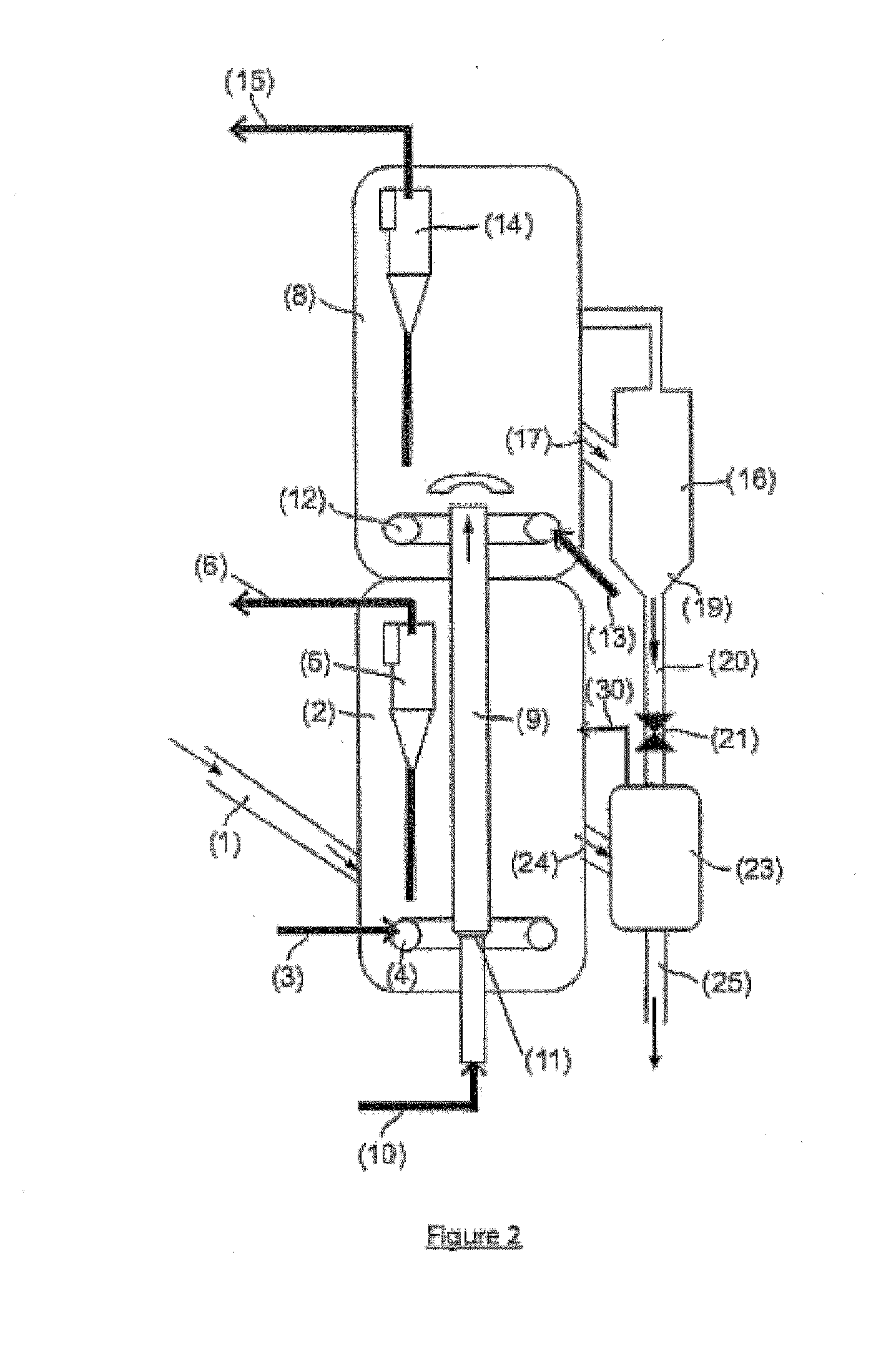Process for Catalytic Cracking with Fine Control of the Residual Coke Content on the Catalyst after Regeneration
- Summary
- Abstract
- Description
- Claims
- Application Information
AI Technical Summary
Benefits of technology
Problems solved by technology
Method used
Image
Examples
examples
[0116]The first example describes the operation of a catalytic cracking unit that operates with a regeneration system that is identical to the one that is described in FIG. 1.
[0117]The feedstock flow rate (Ff) in the reaction zone and the cracking conditions (ROT=output temperature of the riser) are kept constant at a very moderate temperature of 490° C. that promotes the production of LCO.
[0118]The catalyst is regenerated in a system with two regenerators, only a portion of the catalyst being exposed to total combustion conditions.
[0119]Table 1 below shows that by varying the quantity of catalyst between the two regenerators, and by adjusting the streams of air in the first and the second regenerator for keeping constant total combustion conditions (1% by volume of excess dry smoke) in the second regenerator and partial combustion conditions (CO / CO2 molar equal to 1) in the first regenerator, it is possible to vary the coke content of the regenerated catalyst (CRCreg) in a field th...
PUM
| Property | Measurement | Unit |
|---|---|---|
| Temperature | aaaaa | aaaaa |
| Fraction | aaaaa | aaaaa |
| Fraction | aaaaa | aaaaa |
Abstract
Description
Claims
Application Information
 Login to View More
Login to View More - R&D
- Intellectual Property
- Life Sciences
- Materials
- Tech Scout
- Unparalleled Data Quality
- Higher Quality Content
- 60% Fewer Hallucinations
Browse by: Latest US Patents, China's latest patents, Technical Efficacy Thesaurus, Application Domain, Technology Topic, Popular Technical Reports.
© 2025 PatSnap. All rights reserved.Legal|Privacy policy|Modern Slavery Act Transparency Statement|Sitemap|About US| Contact US: help@patsnap.com



